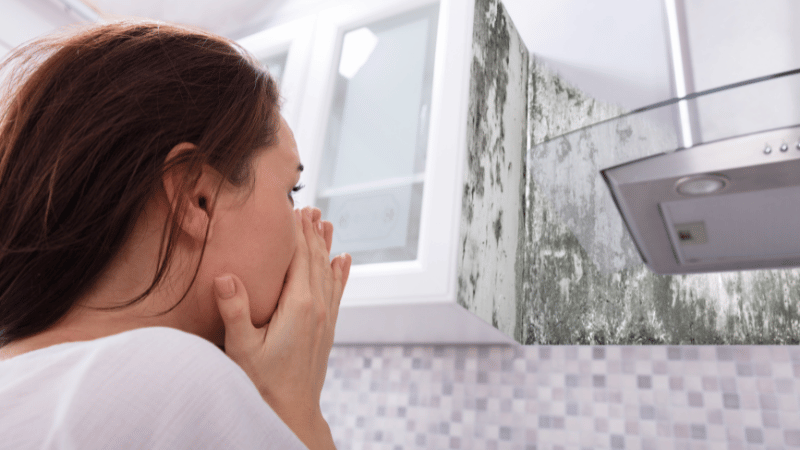Imagine settling into a cozy vacation rental or guest room, only to discover an unwelcome guest: mold. For some people, even a small amount of mold can trigger health issues like allergies, asthma attacks or respiratory problems. Addressing mold sensitivity is crucial to ensuring a peaceful and comfortable stay for your guests. Here’s how you can tackle mold concerns and provide a safe, mold-free environment that promotes relaxation and well-being.
Understanding Mold Sensitivity
Mold is a type of fungus that thrives in damp, warm, and poorly ventilated environments. It can grow on various surfaces, including walls, ceilings and even furniture. While mold is a natural part of the environment, it becomes problematic when it starts growing indoors, particularly in areas with high humidity.
Mold Sensitivity: Sensitivity to mold can vary from person to person. Some individuals may have a heightened sensitivity to mold spores and may react when others do not. A person may experience mild symptoms like sneezing and itchy eyes, while others might suffer from more severe reactions such as chronic coughing, wheezing, dizziness, muscle pain, skin rashes, flu-like symptoms or worsening asthma symptoms. For those with compromised immune systems or existing respiratory conditions, mold exposure can be especially concerning. It can leave someone feeling sick for days and may even trigger chronic health problems.
Identifying Mold Problems
To address mold sensitivity effectively, start by identifying any potential mold issues in your property. Here’s how to spot common mold problems:
1. Visual Signs
● Discoloration: Look for visible signs of mold growth, such as black, green, or white spots on walls, ceilings and floors. Mold often appears in patches and may be accompanied by a fuzzy or slimy texture.
● Water Stains: Check for water stains or discoloration on walls and ceilings, which can indicate leaks or moisture issues that may promote mold growth.
2. Musty Odors
● Unpleasant Smells: A musty or earthy smell is a strong indicator of mold presence. If you detect such odors, investigate further to identify the source and address the issue promptly.
3. Health Symptoms
● Guest Complaints: Pay attention to any complaints from guests about respiratory symptoms, allergies or skin irritation. If multiple guests report similar issues, it may be a sign of a mold problem.
Preventing Mold Growth
Taking proactive steps to prevent mold growth is key to creating a safe and comfortable environment. Here are some effective strategies:
1. Control Humidity
● Dehumidifiers: Use dehumidifiers to maintain indoor humidity levels between 30% and 50%. This helps inhibit mold growth by reducing excess moisture.
● Ventilation: Ensure proper ventilation in areas prone to moisture, such as bathrooms and kitchens. Install exhaust fans to remove humid air and prevent condensation.
2. Address Water Leaks
● Fix Leaks Promptly: Repair any leaks in plumbing, roofs, or windows as soon as they are detected. Water leaks provide a perfect environment for mold growth.
● Inspect Regularly: Regularly inspect your property for signs of leaks or water damage, and address any issues promptly to prevent mold development.
3. Clean and Maintain
● Regular Cleaning: Clean and dry any areas that are prone to moisture, such as shower tiles and window sills. If there is mold, a person cam spray white vinegar directly on mold area and let it sit for at least an hour. Next, scrub the area with a brush or sponge and then wipe the surface with a damp cloth. Hydrogen Peroxide, baking soda, tea tree oil are also other do-it-yourself (DIY) ways used to kill mold.
● Monitor Indoor Plants: Indoor plants can contribute to excess moisture. Ensure proper drainage and avoid overwatering to reduce the risk of mold. Those with severe mold sensitivities can react to mold in indoor house plants.
Addressing Existing Mold Problems
If you discover mold in your property, taking swift action to address the issue is essential. Here’s how to handle existing mold problems:
1. Clean Small Areas
● DIY Cleaning: For small areas of mold (less than 10 square feet), you can clean the affected surfaces using a mixture of water and white vinegar or water and detergent. Scrub the moldy area thoroughly, wipe with damp cloth and ensure it dries completely.
● Protective Gear: Wear protective gear, such as gloves and a mask, to avoid inhaling mold spores during the cleaning process.
2. Professional Remediation
● When to Call Experts: For larger areas of mold (more than 10 square feet) or persistent mold problems, it’s best to hire a professional mold remediation specialist. They have the expertise and equipment to safely and effectively remove mold and address underlying issues.
● Assessment and Treatment: Professionals will assess the extent of the mold problem, remove contaminated materials, and treat the area to prevent future mold growth.
Informing and Preparing Guests
If your property has a history of mold issues or you want to ensure your guests feel comfortable, consider these steps:
1. Transparency
● Disclosure: Be transparent about the steps you take to prevent and address mold issues. This can include providing information about your property’s maintenance practices and any recent mold remediation work.
● Guest Communication: Let guests know that you are committed to providing a clean and safe environment. Reassure them that you take mold concerns seriously and are proactive in addressing any potential issues.
2. Provide Allergy-Friendly Amenities
● Air Purifiers: Consider providing air purifiers with HEPA filters to help reduce airborne mold spores and allergens.
● Mold-Resistant Bedding: Use mold-resistant bedding and mattress covers, such as, bamboo or wool to enhance guest comfort and minimize exposure to potential mold.
Addressing mold sensitivity and concerns is vital for creating a peaceful and enjoyable stay for your guests. By understanding the potential impacts of mold, implementing preventive measures, and addressing any existing mold problems promptly, you can ensure a safe and comfortable environment. Transparency with guests and providing additional amenities can further enhance their experience and reassure them of your commitment to their well-being. With these steps, you’ll be well on your way to offering a clean, mold-free space that promotes relaxation and peace of mind.

